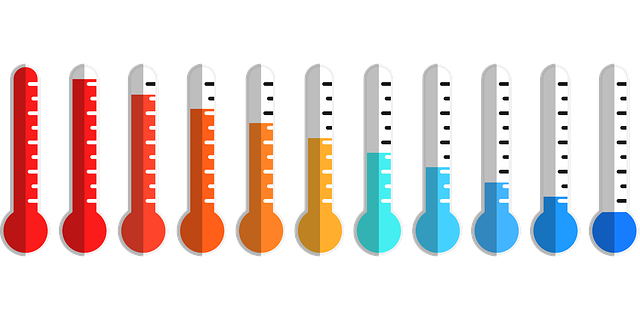What is Delta T in Chiller ?
In a chiller system, ΔT (Delta T) refers to the temperature difference between the coolant entering and leaving the chiller. It is calculated by subtracting the outlet temperature from the inlet temperature, and is expressed in degrees Celsius (°C) or degrees Fahrenheit (°F). For example, if the chiller fluid enters the chiller at 25 °C and leaves at 20 °C, the temperature difference is 5°C. What does the size of Delta T mean? How should it be measured? How does it relate to the performance of the chiller? Let’s discuss this in detail.
How to measure Delta T?
To measure Delta T, you need a temperature sensor. Temperature sensors are installed at the inlet and outlet of the coolant to communicate the real-time temperature to the chiller controller. This data is an important basis for adjusting the compressor frequency, refrigerant flow, and pump speed.

The significance of Delta T
Because the inlet temperature measures the temperature of the coolant after it takes away heat from the equipment or process, and the outlet temperature is the temperature of the coolant after it is cooled, so, all other conditions being equal, the larger the Delta T of the chiller, the better the cooling effect of the equipment.
If the temperature of the process increases, the inlet water temperature of the cooling system will increase. When the outlet water temperature remains unchanged, Delta T will increase, which also means that the load of the system has increased. Therefore, a stable Delta T means that the system is running stably. If it changes suddenly, you need to pay attention to whether the system is abnormal.
Relationship between Delta T and cooling capacity of chiller
The cooling capacity of a chiller represents its ability to remove heat from the equipment or process per unit time, that is, the heat load. It is related to the flow rate, specific heat capacity and Delta T of the coolant. The relationship between Delta T and the cooling capacity of the equipment can be seen from the heat load calculation formula:
Q = m × Cp × ΔT
Q: heat load (kW)
m: flow rate (kg/s)
Cp: specific heat capacity
When the specific heat capacity and flow rate are the same, the larger the Delta T, the more heat the equipment removes per unit time and the stronger the cooling capacity.
For example, the coolant of a process chiller is water. The water flow rate is 1 kg/s, and the specific heat capacity is 4.186 kJ/kg·℃, then:
When ΔT = 3℃, cooling capacity Q = 1 × 4.186 × 3 = 12.56 kW
When ΔT = 5℃, cooling capacity Q = 1 × 4.186 × 5 = 20.93 kW
It is obvious that when Delta T increases, the cooling capacity of the chiller also increases.
Relationship between Delta T and chiller energy consumption
When Delta T is small, it is difficult for the coolant to take away the heat generated in the process. In order to produce the same cooling capacity, it is necessary to increase the flow rate to compensate. However, the increase in flow rate requires the water pump to consume more electricity. Moreover, in order to cool a large flow of coolant, the compressor needs to work more frequently, which will increase its energy consumption. Therefore, increasing Delta T can reduce the total energy consumption of the cooling system.
Abnormal conditions and causes of Delta T
A small Delta T means that the coolant absorbs less heat from the process. It may be because the heat generated in the process is relatively small. It may also be that the coolant flows too fast and stays in the process too short, returning to the chiller before absorbing heat.
A larger Delta T means that the coolant can take more heat away from the equipment. If you are using a high-performance chiller, it can achieve a larger Delta T because this can improve the performance ratio. However, if the difference suddenly increases or exceeds the design value, there is a possibility of system abnormality. When the coolant flows too slowly, the heat exchange time is longer, it can absorb more heat, and the inlet temperature will rise, increasing the temperature difference. This situation may be caused by insufficient pumping capacity, pipe blockage, or too many pipe elbows.
Conclusion
Delta T is an important parameter that affects the cooling capacity of refrigeratori industriali. If you have requirements for the Delta T of the equipment, be sure to communicate clearly with the chiller manufacturer before placing an order. It doesn’t matter if you don’t know how to determine the relevant parameters. The LNEYA team will provide you with the best design solution based on discussing all factors that affect the performance of the chiller with you.
Contact LNEYA to discuss your cooling requirements.
Related chillers
CONTATTO
TEL:
EMAIL:
WeChat & WhatsApp:

Wechat QR

Hai domande o hai bisogno di un preventivo? Compila il modulo sottostante e il nostro team ti risponderà entro 24 ore.
 Refrigeratori industriali LNEYA Produttore Fornitore
Refrigeratori industriali LNEYA Produttore Fornitore
















